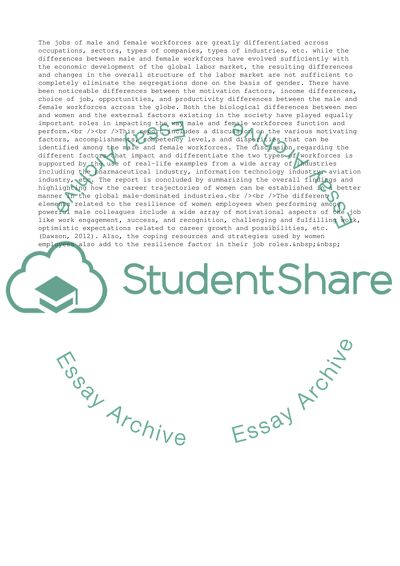Cite this document
(Factors That Differentiate the Male and Female Workforce and How These Coursework Example | Topics and Well Written Essays - 2000 words, n.d.)
Factors That Differentiate the Male and Female Workforce and How These Coursework Example | Topics and Well Written Essays - 2000 words. https://studentshare.org/management/1848332-discuss-the-factors-that-differentiate-the-male-and-female-workforce-and-how-these-underpin-and-structure-womens-career-trajectories
Factors That Differentiate the Male and Female Workforce and How These Coursework Example | Topics and Well Written Essays - 2000 words. https://studentshare.org/management/1848332-discuss-the-factors-that-differentiate-the-male-and-female-workforce-and-how-these-underpin-and-structure-womens-career-trajectories
(Factors That Differentiate the Male and Female Workforce and How These Coursework Example | Topics and Well Written Essays - 2000 Words)
Factors That Differentiate the Male and Female Workforce and How These Coursework Example | Topics and Well Written Essays - 2000 Words. https://studentshare.org/management/1848332-discuss-the-factors-that-differentiate-the-male-and-female-workforce-and-how-these-underpin-and-structure-womens-career-trajectories.
Factors That Differentiate the Male and Female Workforce and How These Coursework Example | Topics and Well Written Essays - 2000 Words. https://studentshare.org/management/1848332-discuss-the-factors-that-differentiate-the-male-and-female-workforce-and-how-these-underpin-and-structure-womens-career-trajectories.
“Factors That Differentiate the Male and Female Workforce and How These Coursework Example | Topics and Well Written Essays - 2000 Words”. https://studentshare.org/management/1848332-discuss-the-factors-that-differentiate-the-male-and-female-workforce-and-how-these-underpin-and-structure-womens-career-trajectories.


